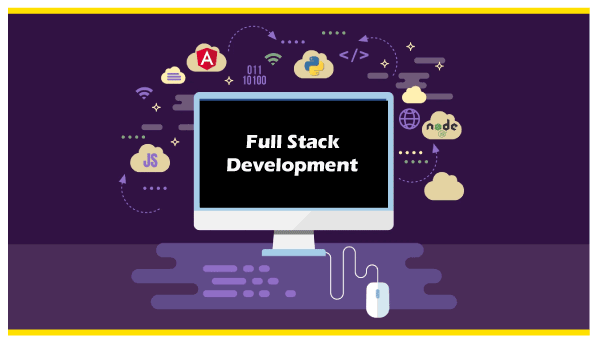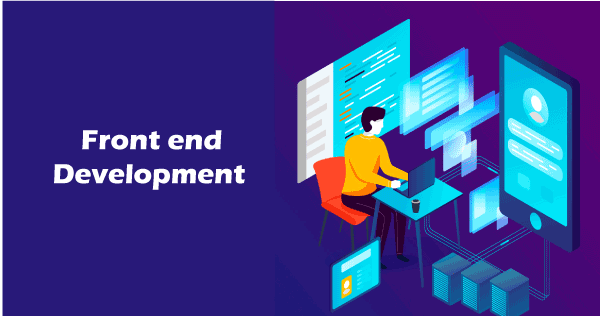How to be a Full Stack DeveloperIn this article, we will give you detailed information about how to be a full-stack developer. 
Let's suppose you are working with a team in a company, and all the members, including you, have been assigned some task related to an application. The application front-end team performs some specific tasks related to UI design and UX or User Experience. In contrast, other team members deal with the backend logic and API part required for the application to run. A Full Stack Developer comes into the picture whenever the application needs to summarize the application's working. A Full Stack Developer deals with all the functionalities of an application, whether related to the Front-End part, Back-end part, API's, or any Middleware program required in the application. A Full-stack Developer debugs the program, responsible for handling the user queries and backend queries at the same time. They deal with the complete business logic by transforming it into an online application. Full Stack Development became fancy in the mid of the '20s when the application needed to handle the extensive data set and better online digital transformation performance. In this era, we are not limited to only HTML, CSS, and XML. We have learned about other trending technologies, languages, and frameworks that transformed a WAP-enabled page into a Progressive Web Apps. These technologies helped to make a complete transformation in the look and feel of the application. However, Full Stack Developers are needed in the Online Digital IT market to support their business performance and make the business logic more efficient. A full-stack developer is a combination of front-end and backend development. Let us discuss each development in detail. Front End DevelopmentWhenever we see a website, anyone like google, Facebook, Twitter, Amazon, etc., so what we see on the website is the front end. 
The front end refers to the interface we see on the website. People got confused between graphic designers and front-end developers. Graphic designers are the one who designs a front part of a website using tools like Adobe Photoshop, Adobe Illustrator, etc. The main focus of UI developers is to stress the website looks. It is the responsibility of UI developers to design the website in an eye-catchy form. In contrast, the front-end developers stress the website's smooth functioning when it is on the client side. The developers who convert that UI into code are front-end developers. It is mandatory to keep in mind whenever the user opens the website, either on a phone, tablet, or laptop, different browsers, the dimensions should be precise. Like UI developers use tools for their designing. Front end developers use the following languages: HTML: HTML is known as hypertext markup language and was developed by Tim Berners Lee. This forms the backbone of every front-end development. It has all the links, hyperlinks from which we can jump from one page to another or revert to the same page. The markups can change any text to image or any link. Every beginner developer who starts to learn web development begins with HTML. It provides the basic framework of the website. The latest version is HTML5. Example of an html webpage: CSS (Cascading Style Sheets): Adding an effect to something makes it more mesmerizing. It is the work of CSS. It adds additional properties to the page, due to which the user gets more attracted. It is done by maintaining the style sheets for every orientation. Example of CSS code: JavaScript: JavaScript is the most famous language which is mainly used today. It is high level, multi-paradigm, and just in time compiled language. According to stack overflow, it is the most used programming language because its frameworks, such as react, angular, next, etc., are based on it. It can be used both in the front end and back end. Primarily JavaScript works in most browsers, but it can work in headless browsers, web view, or compilation input for a native environment. Common Web browsers: Internet Explorer, Firefox, Chrome, and Safari. Headless browsers: Browsers without a GUI that can be controlled with a command-line interface are known as headless browsers, such as headless chromium, Zombie, and slimmerjs. Web view: These are mainly used by a native OS to run native web pages. Examples are Cordova, NW.js, Electron, etc. Back-End DevelopmentThe backend development refers to the server-side of any application. The user interacts with the website developed UI by the front-end developers. They have no interest in how the sign-in works, how we place an order, how the payment works, etc. A backend developer handles these kinds of issues, and the developer focuses on the databases, the APIS, the scripting languages, etc. A backend developer adds life to the tools created by a front-end developer. Let us understand backend tools and techniques in brief:
SummaryFull Stack Development creates opportunities to learn more about how a business logic or idea can be converted to an application. Thus to Become a Full Stack Developer, one must have problem-solving skills and curiosity to learn new technologies. To become a Full Stack Developer, you must be aware of discussed technologies and concepts, and you can follow the general steps to start the journey to become a full-stack developer:
Next TopicHow to Learn Competitive Programming
|
 For Videos Join Our Youtube Channel: Join Now
For Videos Join Our Youtube Channel: Join Now
Feedback
- Send your Feedback to [email protected]
Help Others, Please Share









